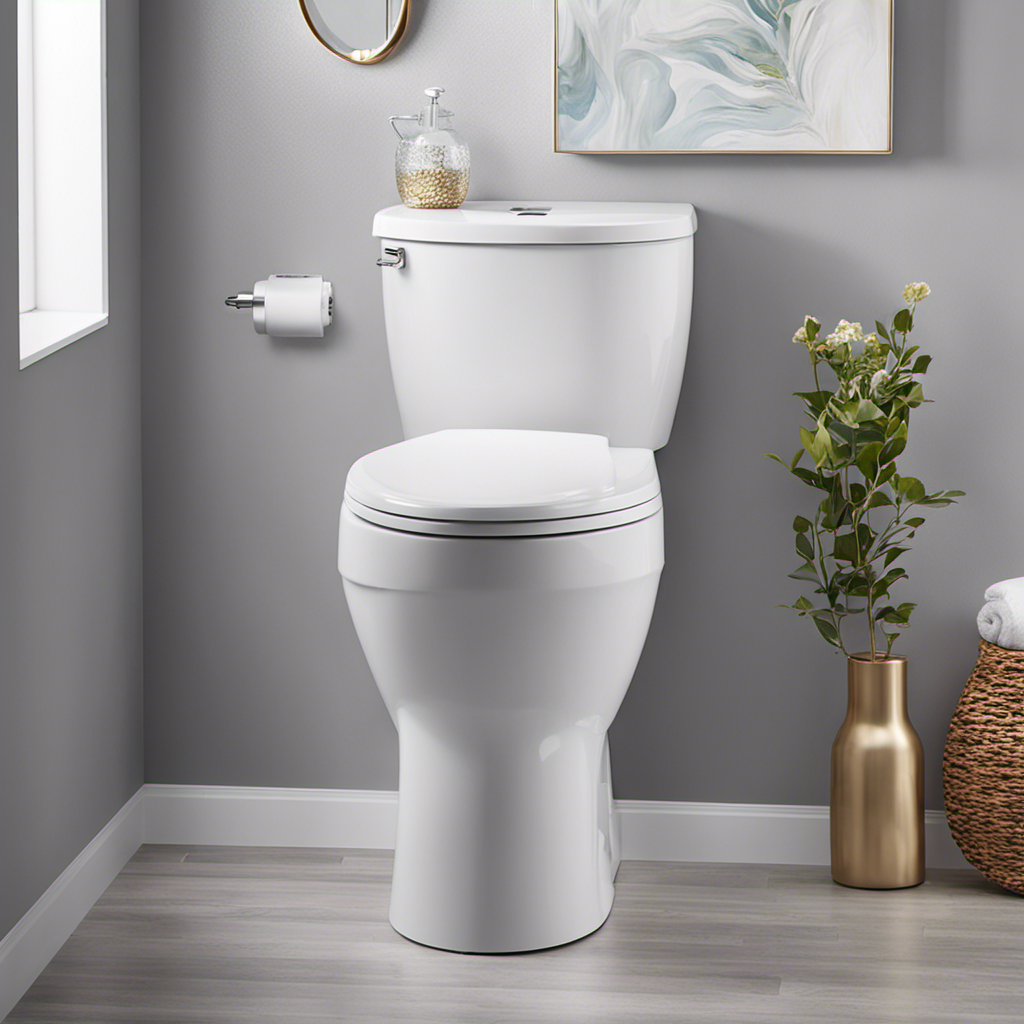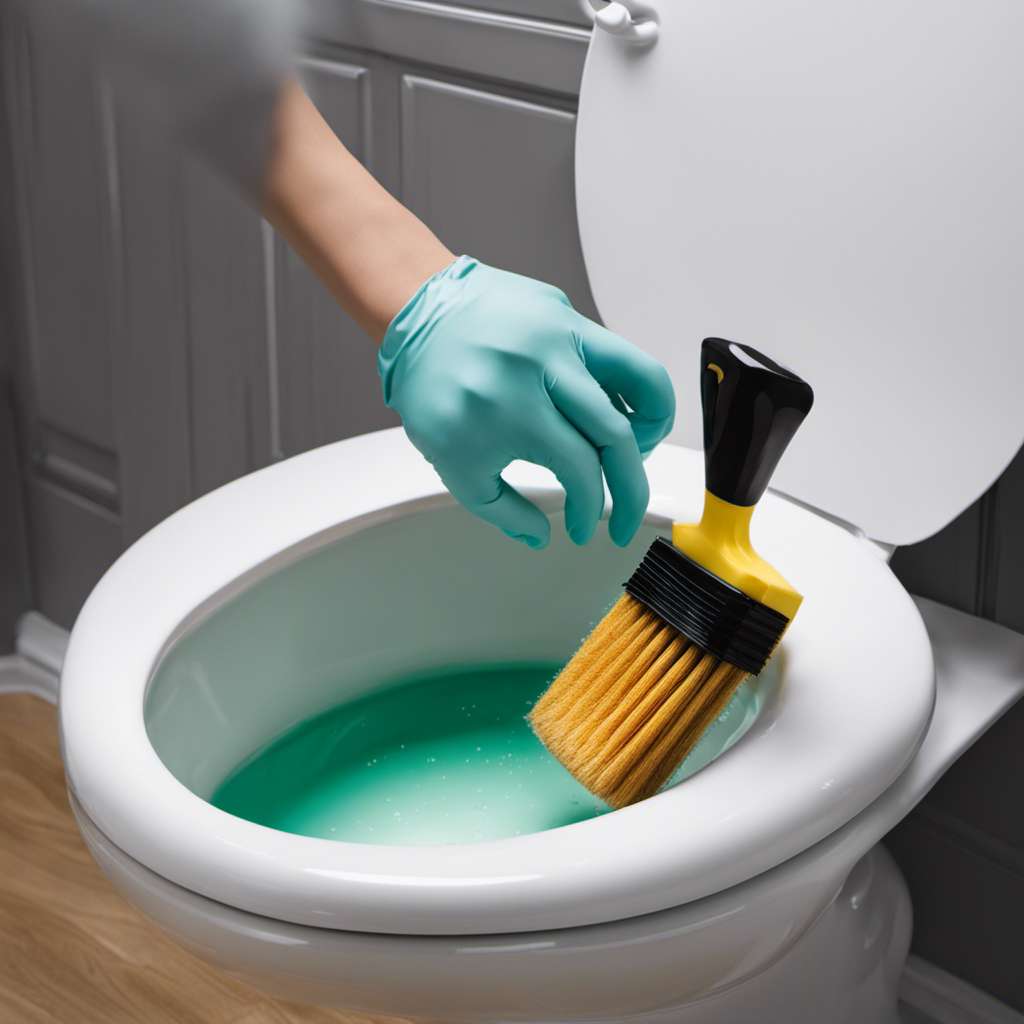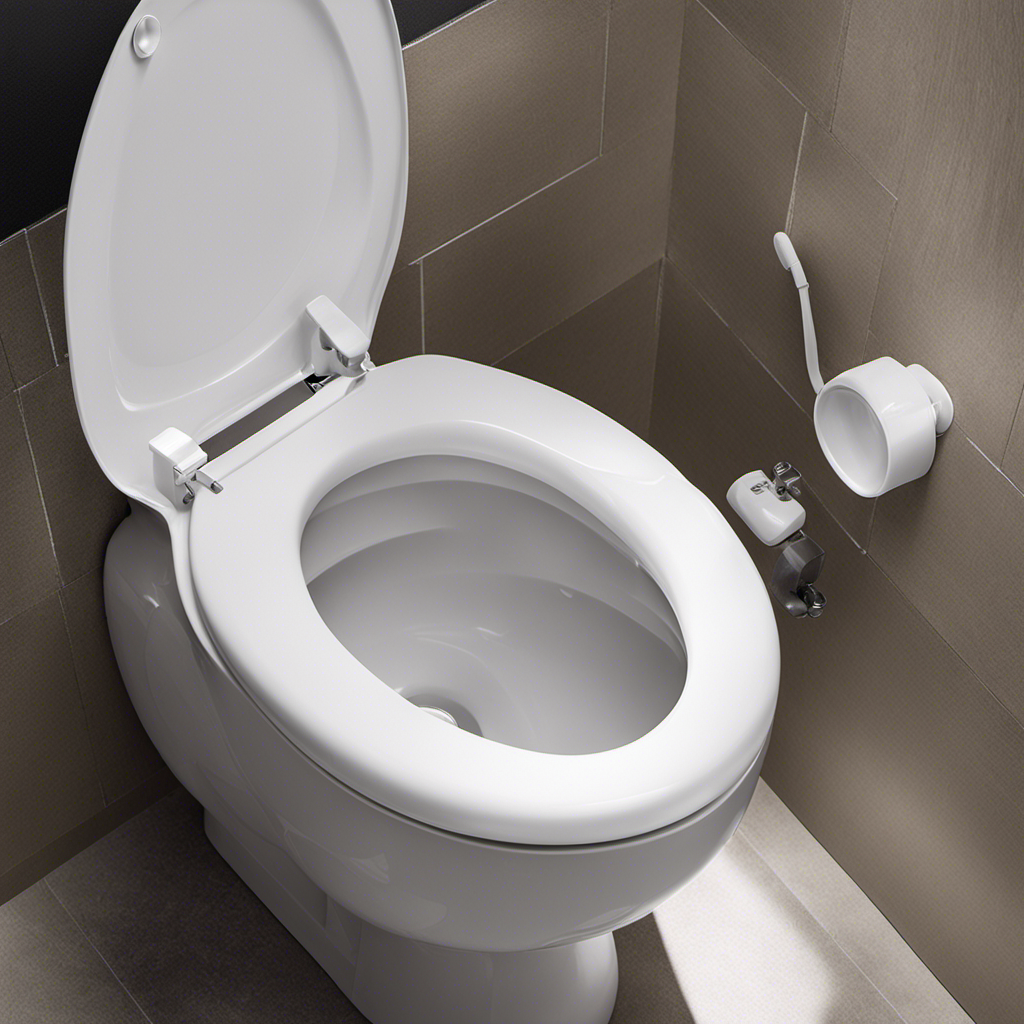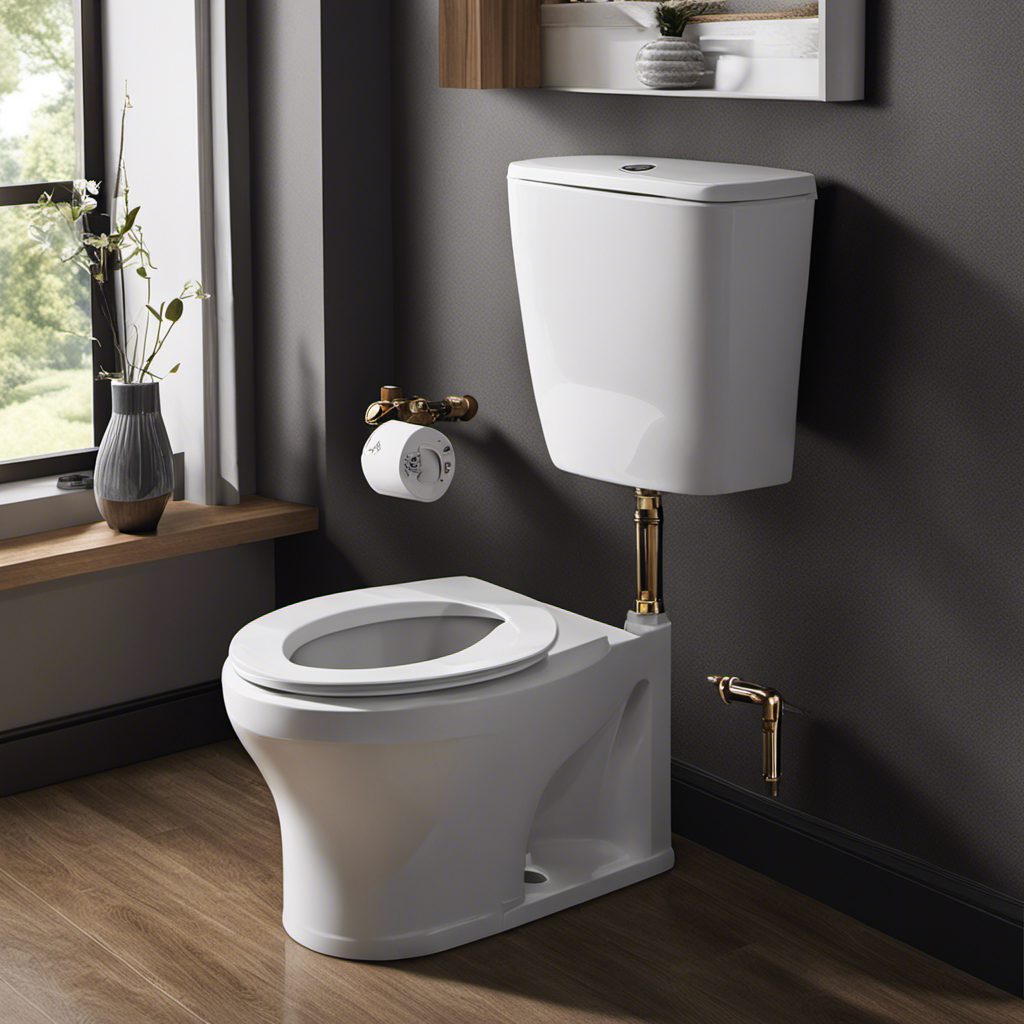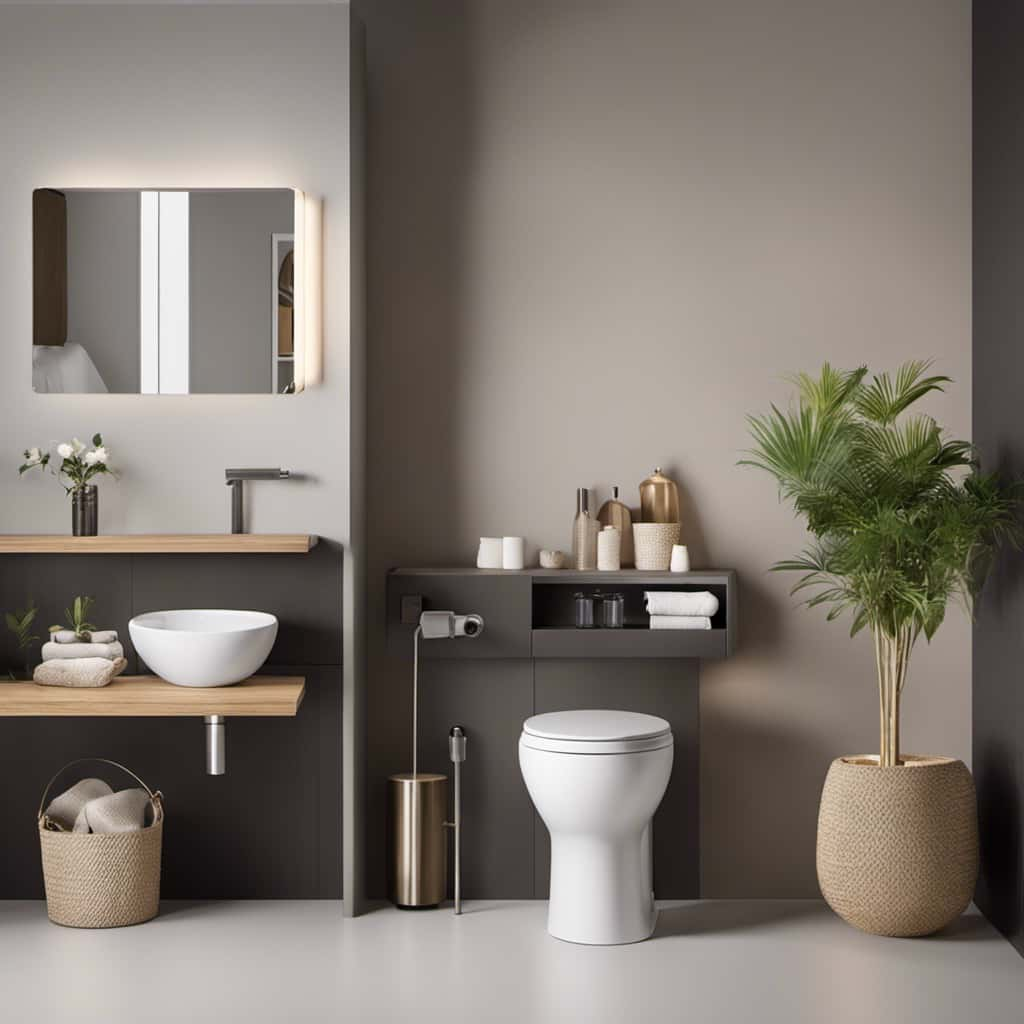As I gaze into the murky depths of my toilet bowl, I am confronted with the unsightly presence of toilet rings. These stubborn stains, caused by a buildup of minerals and bacteria, can be a constant source of frustration.
But fear not, for I am here to guide you through the process of banishing these rings from your porcelain throne. In this article, we will explore the common causes of toilet rings, effective cleaning methods, natural remedies, and preventative measures to ensure a ring-free future.
Key Takeaways
- Toilet rings are caused by mineral buildup in the water supply.
- Regular cleaning using appropriate tools and products is essential for preventing stains and rings.
- Natural remedies like white vinegar, baking soda, lemon juice, borax, and hydrogen peroxide can help remove toilet rings.
- Preventing future toilet rings can be achieved by regularly cleaning the toilet bowl, using a toilet bowl cleaner designed to prevent stains, and avoiding flushing items that can cause clogs or contribute to stains.
Understanding Toilet Rings
To understand why you have toilet rings, you need to know about the minerals in your water. Toilet rings are caused by the buildup of minerals, such as calcium and magnesium, in the water supply. These minerals can leave behind deposits on the surface of the toilet bowl, resulting in unsightly stains and rings.
Removing toilet rings can be a challenging task, but there are effective methods available. One common method is to use a toilet bowl cleaner specifically designed to tackle mineral deposits. These cleaners typically contain chemicals that break down the minerals and remove the stains.
To prevent future toilet rings, it is recommended to use a water softener or install a water filter to reduce the mineral content in your water. Regular cleaning and maintenance can also help prevent the formation of toilet rings.
Common Causes of Toilet Rings
One common cause of toilet rings is improper cleaning techniques. When it comes to preventing stains and keeping your toilet clean, it’s essential to understand the main causes of toilet rings.
Here are some key factors to consider:
- Using abrasive cleaners: Harsh chemicals and scrubbing tools can damage the toilet surface, leading to stains and rings.
- Hard water: High mineral content in the water can leave behind deposits that cause discoloration.
- Neglecting regular cleaning: Infrequent cleaning allows bacteria and mineral buildup, leading to stubborn stains.
- Incorrect toilet bowl water level: Insufficient water can cause waste to stick to the bowl, resulting in ring formation.
- Not using a toilet brush properly: Inadequate scrubbing or missing certain areas can contribute to ring formation.
Effective Cleaning Methods for Toilet Rings
When it comes to keeping your toilet clean and preventing stains, it’s important to know effective cleaning methods for dealing with those stubborn discolorations.
Toilet ring prevention starts with regular cleaning using appropriate tools and products.
To remove a toilet ring, you can try a DIY approach before calling in the professionals. Start by turning off the water supply and draining the toilet bowl.
Then, use a toilet brush or a pumice stone to gently scrub the ring. Make sure to use a non-abrasive cleaner to avoid damaging the porcelain surface.
Rinse the bowl thoroughly and repeat the process if necessary. Remember to wear gloves and ventilate the area properly when working with cleaning agents.
Natural Remedies for Removing Toilet Rings
Using natural remedies, such as vinegar or baking soda, can be effective in removing stubborn toilet rings. These chemical alternatives provide a DIY solution that is both safe and environmentally friendly. Here are five natural remedies that can help you get rid of toilet rings:
- White vinegar: A powerful cleaning agent that breaks down mineral deposits and dissolves stubborn stains.
- Baking soda: Acts as a gentle abrasive that helps scrub away dirt and grime.
- Lemon juice: The citric acid in lemon juice cuts through tough stains and leaves a fresh scent.
- Borax: A natural cleaner that eliminates stains and disinfects the toilet bowl.
- Hydrogen peroxide: Excellent for removing tough stains and disinfecting the toilet.
By using these natural remedies, you can effectively remove toilet rings without relying on harsh chemicals.
Transitioning into the next section, let’s now explore some preventive measures to avoid future toilet rings.
Preventing Toilet Rings in the Future
To prevent future buildup, you should regularly clean your toilet bowl and maintain a consistent cleaning routine. This is crucial in preventing stains and keeping your toilet bowl looking clean and fresh.
One of the most effective long term solutions is to use a toilet bowl cleaner specifically designed to prevent stains and buildup. These cleaners often contain special chemicals that break down minerals and other substances that can cause rings and stains to form.
Additionally, it’s important to consider the type of water you have in your area. Hard water can contribute to the formation of toilet rings, so installing a water softener or using a water conditioner can help prevent this issue.
Finally, be mindful of what you flush down your toilet. Avoid flushing items that can cause clogs or contribute to stains, such as excessive toilet paper or feminine hygiene products.
Frequently Asked Questions
Can Toilet Rings Be a Sign of a Larger Plumbing Issue?
Toilet rings can sometimes indicate larger plumbing problems. If you notice persistent rings, it may be a good idea to schedule a professional plumbing inspection to identify and address any underlying issues.
Can Hard Water Contribute to the Formation of Toilet Rings?
Yes, hard water can contribute to the formation of toilet rings. The minerals in hard water can leave behind stubborn stains. Preventing toilet rings involves regular cleaning and using products that target hard water stains.
Are There Any Commercial Products Specifically Designed to Remove Toilet Rings?
Yes, there are commercial products available that are specifically designed to remove toilet rings. These products can be effective in eliminating stubborn stains. Additionally, there are also effective home remedies that can help in removing toilet rings.
Can Using Bleach Damage the Toilet Bowl While Attempting to Remove Toilet Rings?
Using bleach as a toilet ring remover may cause damage to the toilet bowl due to its high chemical concentration. It’s advisable to explore bleach alternatives and natural cleaning methods to avoid any potential harm.
Can Toilet Rings Reappear After They Have Been Successfully Removed?
Toilet rings can reappear even after successful removal. Prevent them by regularly cleaning and maintaining the toilet bowl. Use appropriate cleaning agents and tools to keep the bowl clean and free from stubborn stains.
Conclusion
In conclusion, tackling toilet rings requires diligence and a bit of know-how. By understanding the causes and using effective cleaning methods, we can bid farewell to those unsightly rings.
And let’s not forget the power of natural remedies, which can provide a gentle yet effective solution.
However, the true key lies in prevention. Just as we strive to keep our lives free from unwanted marks, we must also take the necessary steps to keep our toilets ring-free.
Remember, a little effort now can save us from a world of frustration later.
